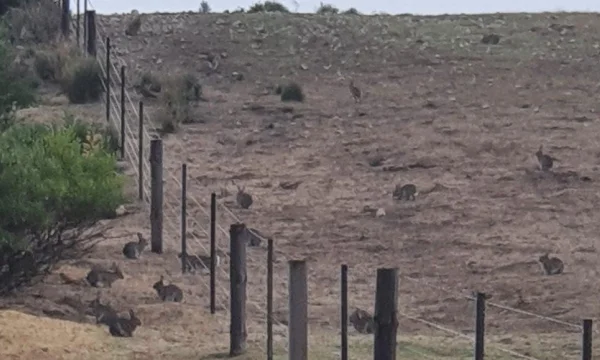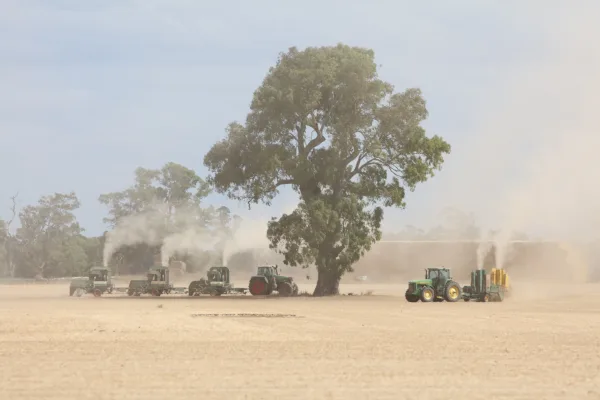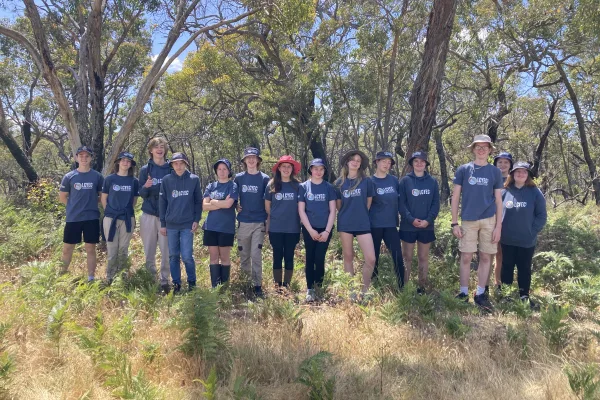Posted on
The Limestone Coast Landscape Board is encouraging landholders in the Coorong and Tatiara District Council areas to take action against the growing wild rabbit population and control them on their property.
This year, the milder winter has led to a wild rabbit population boom across the region, impacting farm productivity, infrastructure and the environment. Rabbits also are a food source for pests such as foxes and cats.
As part of the Wild Rabbit Control Program, our Landscape Officers are conducting 1080 rabbit baiting along roadsides in the Coorong and Tatiara District Council area in January 2025.
“We have contacted surrounding landowners notifying them of the baiting and encouraging them to conduct their own rabbit baiting programs on their property at the same time to maximise control efforts,” said Team Leader for Northern Landscape Operations for the LC Landscape Board, Josh Rosser.
“We are also supporting adjoining landholders by offering discounted 1080 baits in January 2025,’ said Mr Rosser.
Rabbits are notorious for their ability to reproduce at alarming rates, with one pair capable of producing up to 180 offspring in 18 months under ideal conditions.
“The discounted baits are an incentive for landholders to get on top of managing the populations impacting their properties now. Once well established in an area, controlling populations can be challenging and expensive.”
Rabbits do not respect property boundaries, so it is crucial that neighbours work together to address the problem,’ said Mr Rosser.
‘By coordinating our efforts over a short period, we have the best chance of reducing the population, minimising reinvasion, and safeguarding properties from the impact of wild rabbits.’
Effective control of rabbits requires multiple methods, including poison baiting, trapping, warren destruction, fumigation, and biological controls.
“To support control efforts, our Landscape Officers will continue to release biological controls such as calicivirus across the region.” “However, it is important to note that while biological controls play an important role, they alone will not reduce wild rabbit populations to sustainable levels so traditional methods are still needed,” said Mr Rosser.
Under the Landscape South Australia Act 2019, landholders are responsible for controlling wild rabbits on their property.
1080 is a regulated chemical with strict conditions of use. Domestic dogs and other non-target animals may die as a result of consuming 1080 bait.
“I would like to highlight that we will be placing signage on roadsides where we are baiting to notify road users and landholders.”
“Our local Landscape Officers are here to help and assist landholders with their rabbit control efforts,” said Mr Rosser.
Together, we can work to reduce the wild rabbit population and protect our community and environment.




